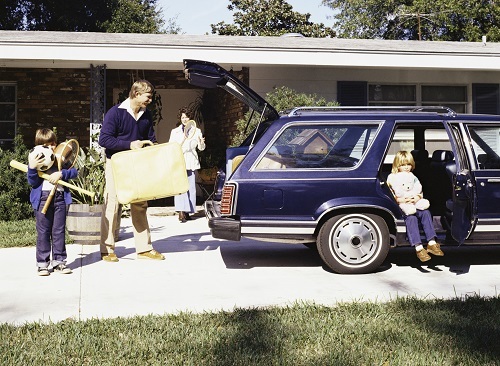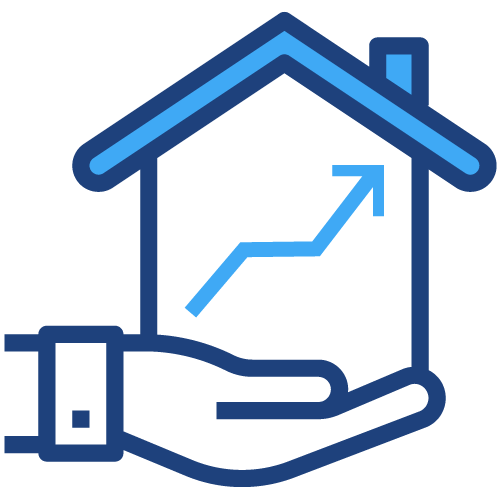Homebuying for Millennials: Why You Can't Always Take Advice from Your Parents on This One

If you’re a millennial who has begun to investigate homebuying, you’ve also likely reached out to your parents for advice. Parents are typically great sources for advice on all sorts of topics: from relationships, to how hot the water should be for laundry, we all look for advice when we need it, especially when wanting to buy a home. The trouble is, when our parents were buying homes, the times were different, and long-term holistic financial health strategies weren’t considered as heavily as “saving a buck.”
Ahh, the 80’s: MC Hammer, Janet Jackson, tracksuits, and the age of 15% interest rates. Houses were also a lot cheaper than as well. Your average single-family home in the 1980s cost about $84,500. When you compare the same home in 2020, it would be worth on average around $285,000, depending on where you live in the United States. So, what is the greatest myth that still lives still from then and maybe ingrained into the brains of our parents? “Avoid PMI at all costs!”
The idea that PMI is a bad thing is simply outdated in our era.
Let’s look at PMI, what it is and why it exists. Most importantly, why it might even save you money in the long run.
What Is PMI?
Simply put, PMI is insurance. It stands for Private Mortgage Insurance. When you borrow money to buy a car, the bank requires you to have replacement insurance to cover the loss. It works the same way when they lend you money to buy a house. Think about this: cars cost on average around $25,000. If you had the cash to pay it off, you most likely wouldn’t have borrowed the money in the first place, right? We can clearly understand why having insurance to cover the cost makes sense. As stated, your typical house today will cost $285,000, and that’s a big loss to cover, but the same repayment analogy can apply. PMI insurance protects the lender, not you individually, from a potential loss. PMI, just like other insurance, is scaled in cost by a few things: your FICO score, the home’s value, and the amount you put down from 19%-0%. You will want to ensure that you are discussing with your lender what your FICO score is and the impact level it might have on PMI.

What does it cost?
Let’s say you wanted to save a 20% down payment for $250,000, which is the average cost of a starter home. The down payment needed would be $50,000. Hard to scrape up that kind of cash with all the money we supposedly spend on avocado toast! Seriously though, with student loans, cell phone bills, and everything else that 2020 has in store for our monthly expenses that 1985 simply didn’t, coupled with the increased cost of monthly rent, saving $50,000 or more is not even attainable for most of us. In 1985, the average cost of a home was $84,500, so 20% down would be $16,900. While that was still a lot in 1985 to save, the difference is drastic, especially when we consider the average income has not increased in this country since roughly the 1970s, based on inflation. Also, think about this: home values could continue to rise while you are working 3 jobs to try to save up for your down payment. If the housing market raises at a clip of just 6% year over year, it would mean the down payment amount you need to save is increasing faster than you can save it! It’s a cycle with a moving target that is always just out of reach. You can get off this hamster wheel. You can work with your lender on a lower down payment or even no down payment, accept that PMI may be a reality, and start building equity in a home that is yours, today.
What is holding you back?
If you’re still biting your nails over the prospect of PMI, let’s look at an example. Also, you should stop biting your nails, and go wash your hands, it is 2020! Let’s say you put down just 3% now and accept PMI on a home. Your PMI monthly costs would be $111 if your home is valued at $250,000. According to the expected home value survey done by Pulsenomics, home values are expected to increase by 19.4% between 2018 and 2022. That means, by borrowing now, you could potentially expect to increase the value in your home and make build equity faster than you were able to save.
What should you do?
I may be biased, but a great option is to talk to a mortgage professional, who has experience looking at the numbers. Our job, and honestly something we love to do, is looking over the numbers and finding you the best solution. So, go ahead and talk to your parents and let them give you advice on all sorts of things, but let the professionals work out the housing numbers – otherwise, you might be sharing that room with your little brother for much longer than you thought.




